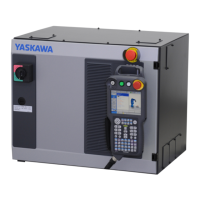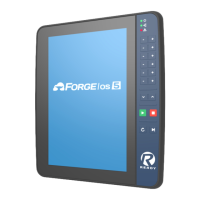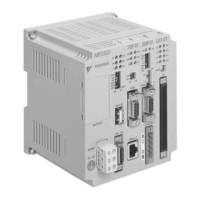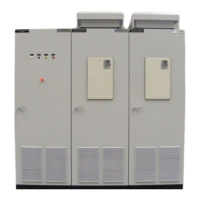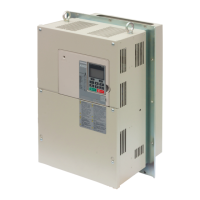Do you have a question about the YASKAWA yasnac lx3 and is the answer not in the manual?
Details coordinate word definitions, including absolute, incremental, and arc commands.
Lists and describes G-codes for motion control, cycles, and coordinate system settings.
Provides the procedure for powering the machine on and off, including sequence and checks.
Explains how to view and input data on the CRT display, covering various screens and modes.
Details writing and editing part programs directly via the MDI.
Covers viewing and resetting current tool positions (External, Absolute, Increment).
Guides on managing tool offset data, including viewing, writing, and using tool coordinate memory.
Explains how to display and modify system settings, including bit and decimal formats.
Details the process of viewing and changing machine parameters that control operating conditions.
Explains how to view and interpret system alarms, messages, and maintenance history.
Describes procedures for loading part programs, tool offsets, and setting/parameter data into machine memory.
Provides instructions for editing part programs, including modifying, adding, and deleting data.
Explains the function of the mode select switch for choosing operation modes.
Explains the function of the emergency stop pushbutton for immediate machine shutdown.
Covers the use of the handle dial for manual tool feeding and its operation.
Covers switches for adjusting jog feedrate and overriding programmed feedrates.
Explains how the manual absolute switch affects tool movement after interruption.
Outlines essential checks of the control and machine before powering on.
Provides the sequence for powering on the control and servo systems, and verifying readiness.
Explains how to operate the machine manually using RAPID, JOG, STEP, or HANDLE modes.
Details necessary steps before automatic operation when leadscrew error compensation or stroke limit functions are used.
Covers procedures for preparing the machine for automatic operation, including returning to the start point.
Guides users on the steps for operating the machine in Tape or Memory modes, including switch settings and tape loading.
Explains how to interrupt automatic operation for manual tasks and resume it safely.
Details performing automatic operation by entering commands directly via the MDI.
Describes modifying program data in memory mode using MDI while interrupting automatic operation.
Outlines necessary steps before powering off the machine for safety and proper shutdown.
Provides the sequence for safely turning off the machine's control and servo power.
Details double-word parameters for advanced functions like automatic coordinate systems and error compensation.
Explains how compensation is applied to X and Z axes and the data format for setting compensation.
Details alarm codes and their causes related to programming, buffer overflow, and basic errors.
A comprehensive list of G-codes, their groups, functions, and whether they are basic or optional.
Details coordinate word definitions, including absolute, incremental, and arc commands.
Lists and describes G-codes for motion control, cycles, and coordinate system settings.
Provides the procedure for powering the machine on and off, including sequence and checks.
Explains how to view and input data on the CRT display, covering various screens and modes.
Details writing and editing part programs directly via the MDI.
Covers viewing and resetting current tool positions (External, Absolute, Increment).
Guides on managing tool offset data, including viewing, writing, and using tool coordinate memory.
Explains how to display and modify system settings, including bit and decimal formats.
Details the process of viewing and changing machine parameters that control operating conditions.
Explains how to view and interpret system alarms, messages, and maintenance history.
Describes procedures for loading part programs, tool offsets, and setting/parameter data into machine memory.
Provides instructions for editing part programs, including modifying, adding, and deleting data.
Explains the function of the mode select switch for choosing operation modes.
Explains the function of the emergency stop pushbutton for immediate machine shutdown.
Covers the use of the handle dial for manual tool feeding and its operation.
Covers switches for adjusting jog feedrate and overriding programmed feedrates.
Explains how the manual absolute switch affects tool movement after interruption.
Outlines essential checks of the control and machine before powering on.
Provides the sequence for powering on the control and servo systems, and verifying readiness.
Explains how to operate the machine manually using RAPID, JOG, STEP, or HANDLE modes.
Details necessary steps before automatic operation when leadscrew error compensation or stroke limit functions are used.
Covers procedures for preparing the machine for automatic operation, including returning to the start point.
Guides users on the steps for operating the machine in Tape or Memory modes, including switch settings and tape loading.
Explains how to interrupt automatic operation for manual tasks and resume it safely.
Details performing automatic operation by entering commands directly via the MDI.
Describes modifying program data in memory mode using MDI while interrupting automatic operation.
Outlines necessary steps before powering off the machine for safety and proper shutdown.
Provides the sequence for safely turning off the machine's control and servo power.
Details double-word parameters for advanced functions like automatic coordinate systems and error compensation.
Explains how compensation is applied to X and Z axes and the data format for setting compensation.
Details alarm codes and their causes related to programming, buffer overflow, and basic errors.
A comprehensive list of G-codes, their groups, functions, and whether they are basic or optional.
| Model | YASNAC LX3 |
|---|---|
| Manufacturer | Yaskawa |
| Type | Robot Controller |
| Applicable Robots | Yaskawa robots |
| Control Method | Digital servo control |
| Input Voltage | 200-240V AC |
| Communication Ports | Ethernet |
| Interpolation | Linear, Circular |
| Operating Temperature | 0 to 45°C |
| Humidity | 20 to 80% RH (non-condensing) |
| Storage Temperature | -20-60°C |




